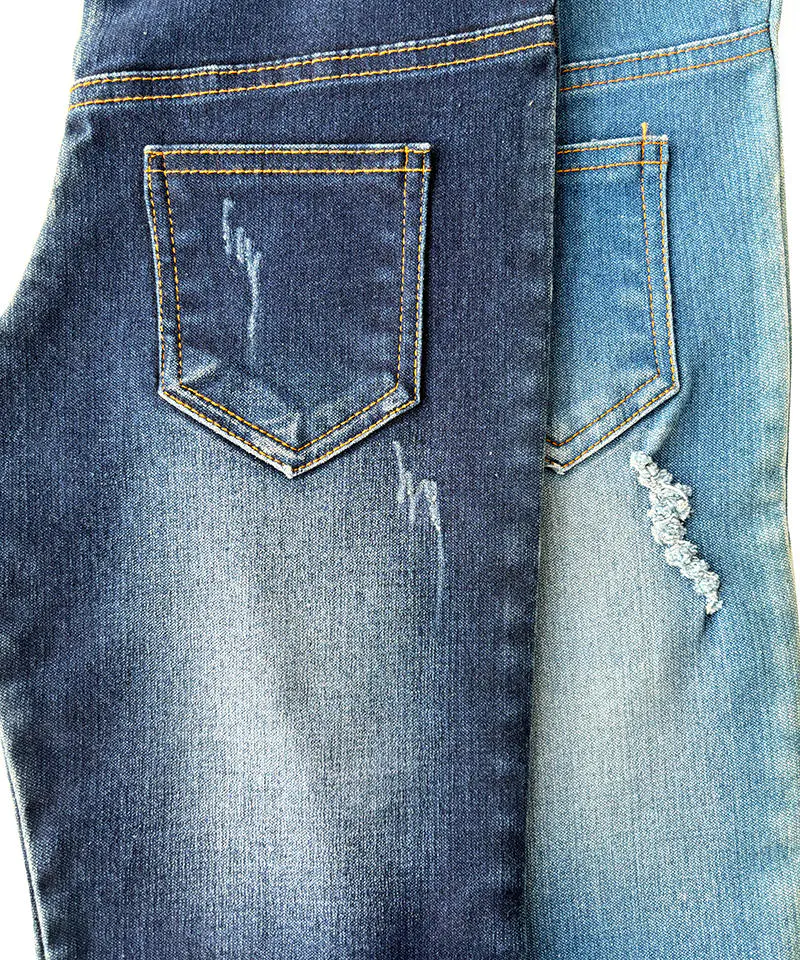1、 Clear customization requirements: laying the foundation for personalization
The first step in customizing Jacquard Denim Fabric is to clarify your specific needs. This includes but is not limited to the purpose of the fabric (such as clothing, home furnishings, car interiors, etc.), expected style (retro, modern, minimalist, etc.), color preferences, pattern design, and durability and comfort requirements. Clear customization requirements not only help designers accurately understand your intentions, but also ensure that the final product meets your expectations.
Usage positioning: Different uses have different requirements for the physical properties of fabrics. For example, clothing fabrics need to pay attention to breathability and elasticity, while home decoration may place more emphasis on wear resistance and color durability.
Style design: Determine the fabric design style based on your brand philosophy or project theme. Jacquard Denim is known for its versatile patterns, ranging from classic stripes and geometric shapes to complex floral patterns.
Color selection: In addition to traditional indigo blue, modern Jacquard Denim Fabric also supports multiple color customizations, ranging from soft Morandi colors to bright fluorescent colors.
2、 Design patterns and sample production: collision of creativity and technology
Once the requirements are clear, the next step is to design patterns and make samples. This step is the core of customizing Jacquard Denim Fabric, which directly determines the visual effect and uniqueness of the fabric.
Pattern design: Use professional design software to transform your creativity into digital patterns. It can be a hand drawn sketch, photographic work, or abstract graphic, which the designer will convert into a file format suitable for Jacquard weaving technology.
Technical preparation: Jacquard weaving relies on precision jacquard devices, so it is necessary to convert design patterns into machine-readable language, namely jacquard programs. This process requires a high degree of precision and professionalism to ensure the accurate reproduction of patterns.
Sample production: It is crucial to make samples before formal production. This is not only a preliminary verification of the design effect, but also a key step in adjusting process parameters and optimizing fabric performance. During the sample production process, the yarn material, density, color matching, etc. can be adjusted to achieve the best effect.
3、 Fabric production and quality control: exquisite craftsmanship and rigorous standards
After sample confirmation, enter the large-scale production stage. The production of Jacquard Denim Fabric is a complex and intricate process involving multiple stages such as yarn preparation, weaving, dyeing, and post-processing.
Yarn selection: Choose suitable yarn materials based on design requirements, such as pure cotton, blended yarn, etc. The thickness and strength of the yarn directly affect the texture and durability of the fabric.
Weaving process: Jacquard looms control the lifting and lowering of different warp yarns to form complex patterns. This process requires extremely high mechanical precision and operational skills to ensure the continuity and clarity of the pattern.
Dyeing and post-processing: Dyeing is a crucial step in imparting color to Jacquard Denim Fabric. Modern dyeing techniques can achieve rich color variations and natural transition effects. Post processing includes shrinkage treatment, soft finishing, etc., to improve the comfort and durability of the fabric.
Quality control: Strict quality control is required at every stage of production, including fabric strength testing, color fastness testing, etc., to ensure that each batch of fabric meets the standards.
4、 Delivery and follow-up services: Establishing long-term cooperative relationships
After production is completed, Jacquard Denim Fabric will be safely delivered to customers through packaging and logistics. But customized services are not limited to this, high-quality follow-up services are an important cornerstone for establishing long-term cooperative relationships.
Logistics delivery: Choose reliable logistics partners to ensure that fabrics are not damaged during transportation, while providing flexible delivery time options.
After sales service: Provide fabric usage guidance, sample retention services, and a quick response mechanism for quality issues, so that customers have no worries.
Continuous communication: Regularly communicate with customers, collect feedback, and continuously optimize products and services to meet market changes and customer demand upgrades.



 English
English Español
Español















